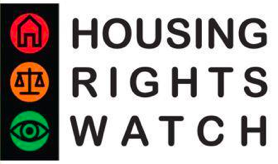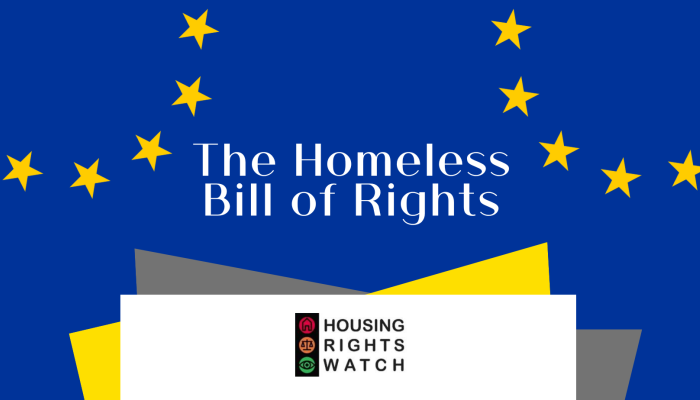Legal Researcher and Consultant
Ph.D. in Law
This short article illustrates how international and European anti-discrimination law can be used to tackle certain housing issues and contribute to a better implementation of the right to housing. I look at three specific anti-discrimination legal concepts (direct discrimination, indirect discrimination and housing harassment), showing how these concepts operate in the field of housing and how they can be leveraged to address certain housing rights violations.
Direct discrimination
Direct discrimination arises when one person is treated less favourably than another person is treated or would be treated in a comparable situation because of a prohibited discrimination ground. Direct discrimination is the most straightforward anti-discrimination legal concept: it can be used to fight instances of unequal treatment based on hostility, prejudice and stigma against certain individuals because they have certain traits or because they belong to certain socially disadvantaged groups.
The paradigmatic case of direct housing discrimination is the refusal by an owner or a landlord to sell or to rent out to a particular individual or family because of their ethnic origin, their gender, their sexual orientation, their age, their family status, their migration background, their socioeconomic disadvantage, etc. Far from a mere textbook example, this type of prohibited discrimination is still very present in European countries and it is routinely documented by national equality bodies in their reports.
Direct discrimination may take various forms, like a landlord stating that they do not rent out to Black individuals or to same-sex couples, or their setting stricter solvability requirements for foreigners as compared to nationals. Some direct discrimination cases also involve an instruction to discriminate: for instance, real estate agents may implement discriminatory orders from their clients when looking for potential tenants. In this case, both the person giving the instruction and the person carrying out the instruction will be liable for unlawful discrimination.
Besides private actors, public authorities may also incur in direct discrimination against individuals and families. The clearest example of a group suffering structural housing discrimination in Europe as a result of hostility, prejudice and stigma are Roma. Several cases before international and European courts and treaty-monitoring bodies concern the targeted demolition or the threat of eviction of residents in areas where the majority of the population is Roma.
A final example of direct housing discrimination by public authorities is the lack of sufficient protection for women against gender-based violence, which has undeniable links with housing and the domestic realm. Direct discrimination arises in the case of women abused by their male partners or ex-partners who are unable to escape this violence because no public shelter is equipped to host them with their children.
Indirect discrimination
Indirect discrimination arises when a norm, a policy or a practice which is apparently neutral creates a particular disadvantage for a group defined by a prohibited ground, without this measure being justified by a legitimate aim and being implemented through appropriate and necessary means. This particular disadvantage can be proven, among others, through statistics showing a disproportionate impact against that group.
Indirect discrimination is sometimes a consequence of discrimination based on hostility, prejudice and stigma hidden behind an apparently neutral criterion to circumvent the prohibition of direct discrimination. In other cases, it is the result of established and unchallenged rules which fail to consider the specific situation and needs of disadvantaged groups without a proper justification. Although there is no formal difference in treatment in this last scenario, treating unequals equally may lead to inequality, due to the structural bias embedded in those norms, policies and practices.
To better put the concept of indirect discrimination into context, we can look at Travellers. Historically across Europe, state action has tried to force these groups to assimilate to majority-dominated understandings of housing, refusing to recognise the specificities of their cultural identity. Several judicial and quasi-judicial decisions at the European level have addressed indirect housing discrimination against Travellers, often linked to systematic evictions from sites or dwellings they occupy due to the insufficient number of permanent adequate sites to settle in.
Examples of facially neutral policies with a disproportionate impact on Travellers can also be found at the national level. In the Netherlands, several cases have dealt with the drastic reduction carried out by the Dutch government of the number of sites available to accommodate Travellers. In Ireland, despite sufficient funding to provide Travellers with targeted accommodation, there is a general lack of political willingness leading to an implementation deficit.
Legislators and policymakers must actively take the particular identities and needs of disadvantaged groups into account when designing and implementing housing laws and policies, as doing otherwise may lead to unlawful indirect discrimination. This entails a commitment towards inclusive and diversity-conscious representations of what housing means for different groups, acknowledging that the default conception at the root of most norms and practices is based on majority representations without much room for alternative understandings.
Discriminatory harassment
Discriminatory harassment is a powerful concept to address certain actions that may be difficult to subsume within the categories of direct and indirect discrimination, but which are nonetheless common in the housing context. Discriminatory harassment focuses on the existence of a persistent undesirable conduct linked to one of the prohibited grounds, with the aim to harm dignity or to create an intimidating, hostile, degrading or offensive environment that impedes the full exercise or realisation of human rights. Unlike direct and indirect discrimination, it does not require a comparative element.
Discriminatory housing harassment is characterised by the perpetrator’s intent to obstacle or to impede the realisation of the right to housing in connection with a prohibited ground. It must be persistent, involving the repetition of an action or a series of actions over time. The most frequent instance of housing harassment occurs when a landlord tries to evict a tenant through unlawful means to conclude a new rental agreement, often because they can then charge a higher rent or because less stringent regulations will apply to the new contract.
The prohibition of housing harassment has been upheld by some national courts and equality bodies across Europe. A notable example was the publication by the mayor of a Hungarian municipality of an open letter to residents asking them to refrain from selling real estate to Roma. In another case, discriminatory harassment was found in the decision of a municipality to build a concrete wall separating a predominant Roma neighbourhood from the main city road.
The Barcelona City Council has also started to use the notion of housing harassment to tackle undesirable conduct by some landlords. This is supported by the Catalan Right to Housing Act, which explicitly prohibits any action or omission with the purpose of disturbing a person in the peaceful enjoyment of their dwelling and with the ultimate aim of forcing them to adopt an unwanted decision regarding their legal right to occupy that dwelling.
Discriminatory housing harassment could thus be used to address the situation of precarious and undocumented migrants forced to rent from slum landlords who take advantage of their vulnerability and who offer them degrading housing conditions at abusive prices. It could also be used to tackle the inhuman treatment given by some public authorities to homeless persons when they prohibit and sanction rough sleeping or when they treat these persons in an intimidating and hostile manner.
Conclusion
The three anti-discrimination legal concepts explored in this article (direct discrimination, indirect discrimination and discriminatory harassment) can be used to tackle specific housing issues and housing rights violations. They evidence that anti-discrimination law is a valuable ally in the fight for a better realisation of the right to adequate housing.
Firstly, direct discrimination allows us to tackle violations linked to group-based hostility, prejudice and stigma against individuals, including when an instruction to discriminate is involved. This is especially relevant in the case of Roma in Europe. Secondly, indirect discrimination permits to address the situation where a norm, a policy or a practice has a disproportionate impact on a disadvantaged group without an adequate justification, clarifying the need for public authorities to take the specific situation of these groups into account. This becomes particularly clear in the case of Travellers. Thirdly, housing harassment can be used to combat persistent undesirable conduct linked to a prohibited ground that impedes the full realisation of the right to housing for certain individuals. This is relevant to combat the actions of slum landlords and the degrading treatment of homeless persons by public authorities.
Link to full PhD. thesis: Securing housing for all in diverse European societies : applying international and European antidiscrimination law to the housing context




